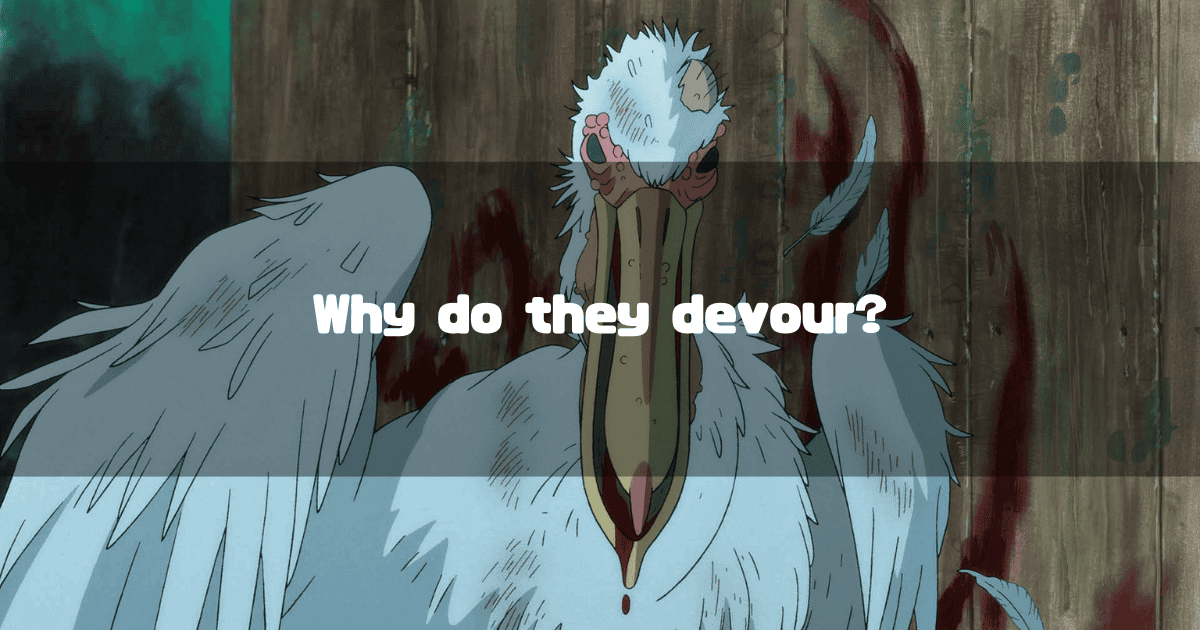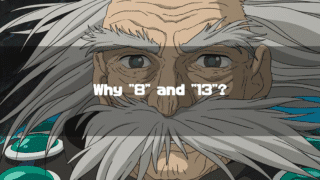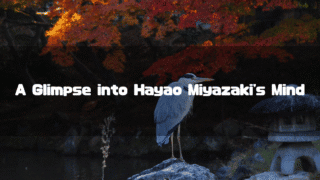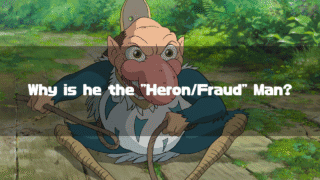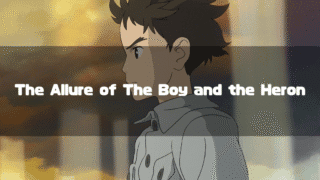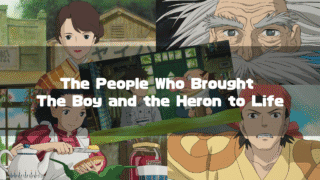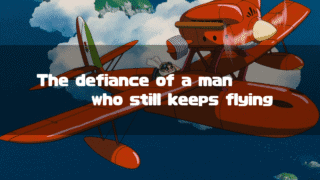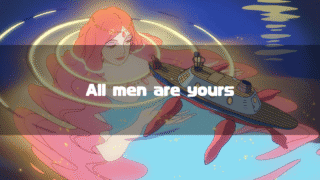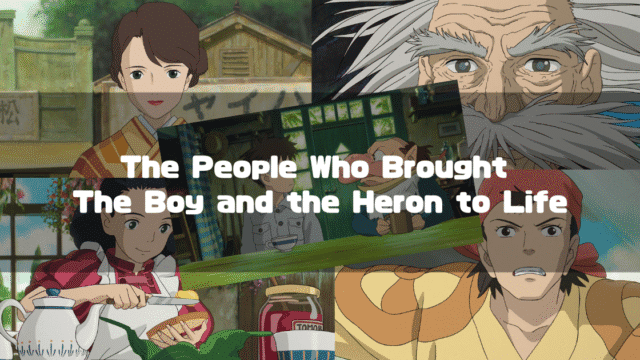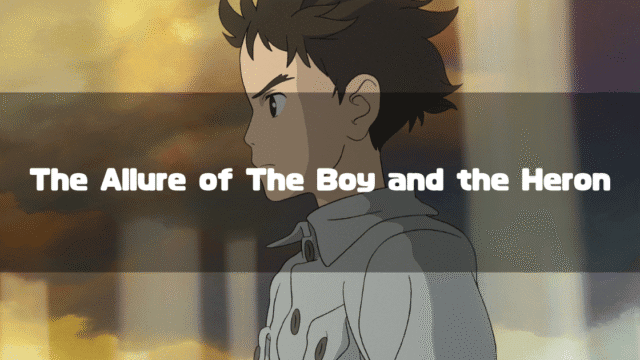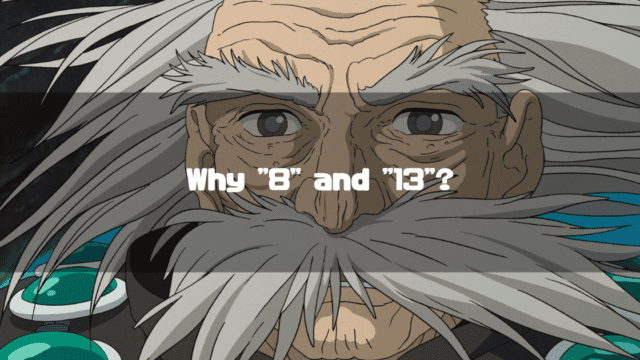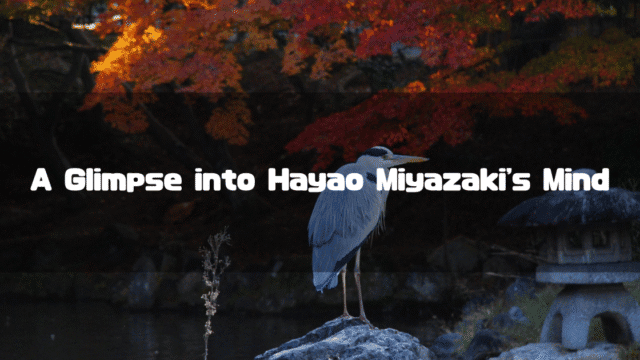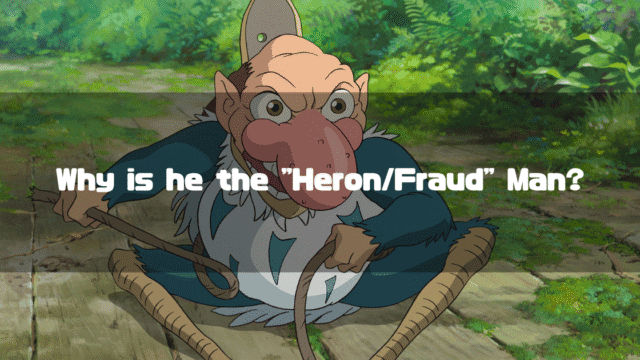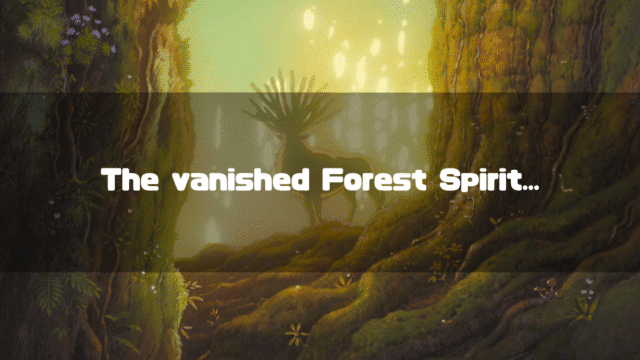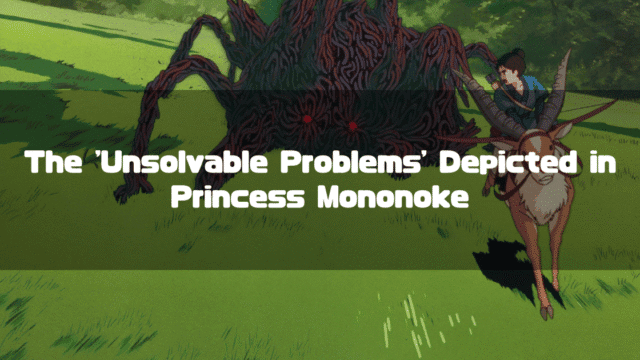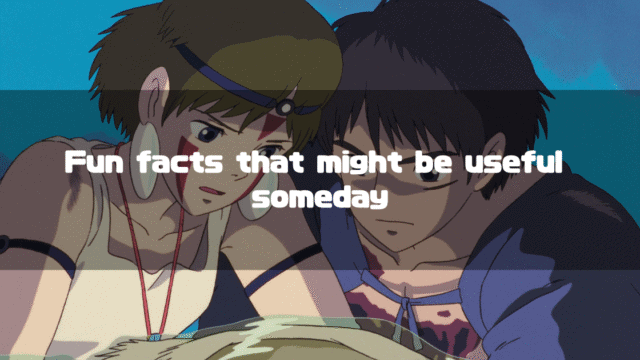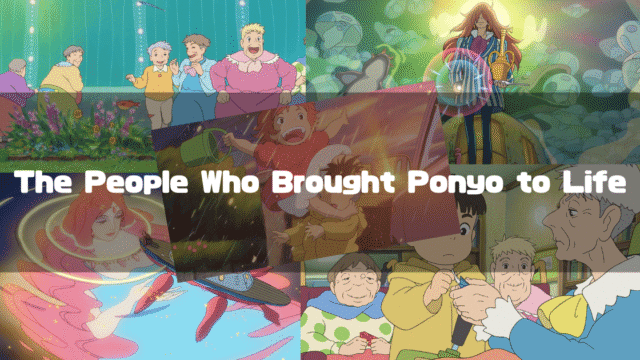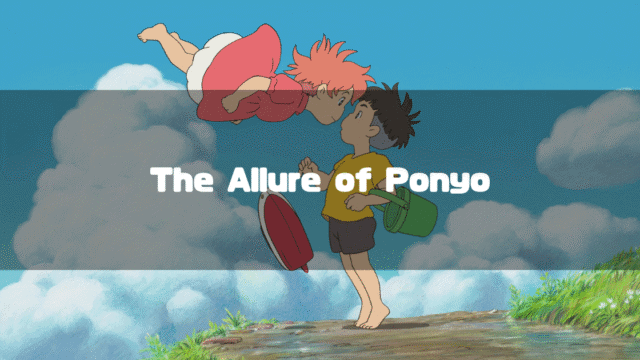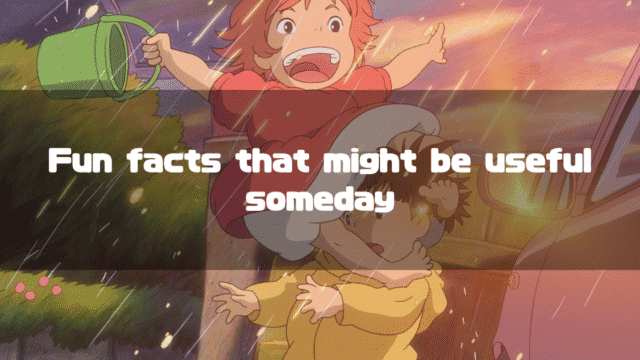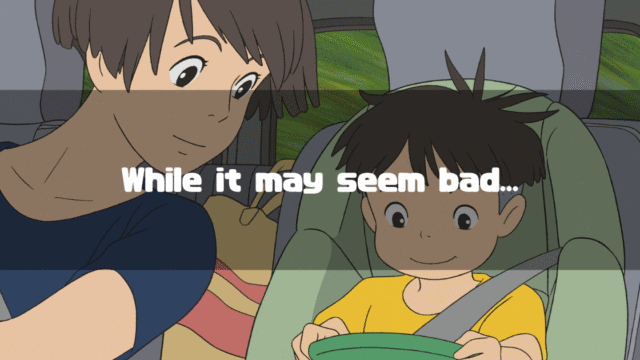The Boy and the Heron(Official Studio Ghibli Website) is a 2023 animated feature film directed by Hayao Miyazaki.
Personally, I found it to be a very memorable film, but it could also be said that the “impression” it leaves is so strong that trying to “understand” the finer details becomes a significant challenge (though it was simply enjoyable).
I believe the main reason for this difficulty lies in the fact that “a single entity is given multiple, complex meanings.” Just when you think, “Ah, so this represents that!” in another scene, it becomes something entirely different. This aspect, I feel, makes our “understanding” difficult and creates the “mysteries” of the film.
This time, I want to explore the multitude of parakeets and pelicans depicted in the enigmatic The Boy and the Heron.
Unfortunately, I cannot provide a clear answer as to “why parakeets and pelicans were chosen,” but we can contemplate “what the parakeets and pelicans signify.” In this article, I will write about these various points.
To consider these things, we must share an understanding of what the “tower built by the Granduncle” and the “world below” signify in the film. Beyond that, we need to have some understanding of the relationship between director Hayao Miyazaki and director Isao Takahata. Starting from there, I will delve into the mystery of the “parakeets” and “pelicans.”
*This article is an English translation of the original Japanese article, 【君たちはどう生きるか】大量のインコとペリカンは何を意味するのか-大王が象徴する宮崎駿と「俺達」-.
Let an AI walk you through the highlights of this post in a simple, conversational style.
- The Granduncle’s Tower and the World Below—A Metaphor for the Creative World
The Granduncle’s tower and the world below symbolize Studio Ghibli and Hayao Miyazaki’s mind. The premise for understanding the story is that the protagonist, Mahito, is an extension of Miyazaki, and the Granduncle is modeled after Isao Takahata. - The Pelicans—Miyazaki’s Self-Portrait Devouring Talent
The pelicans preying on the Warawara are a confession of Hayao Miyazaki’s own sin of being unable to avoid consuming the talent around him, reflecting the harsh reality of the creative workplace. - The Parakeet King and the Flock—Rebelling Creators and Consuming Audiences
The Parakeet King represents another version of Hayao Miyazaki rebelling against the Granduncle (Isao Takahata). The vast number of parakeets, like the pelicans, are a projection of Miyazaki himself, while also mirroring the people who consume his works. - From “Malice-filled Stones” to “Friends”
The conflict between the Granduncle and the parakeets expresses two things: the rebellion against Isao Takahata and Hayao Miyazaki’s own self-reflection, illustrating the harshness of the animation production environment.
- The Granduncle’s Tower and the World Below -Preparing to Understand the Film-
- An Analysis of the Meaning of the Numerous Parakeets and Pelicans
The Granduncle’s Tower and the World Below -Preparing to Understand the Film-
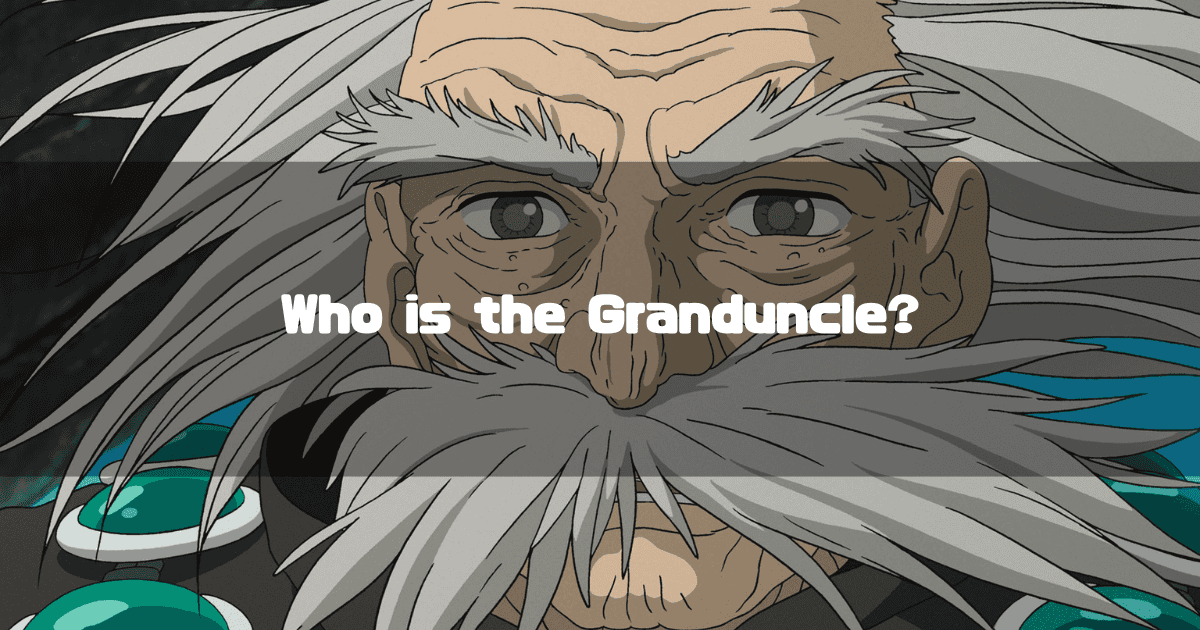
Ghibli producer Toshio Suzuki, in an interview with Hito Cinema (Wayback Machine, in Japanese), stated that The Boy and the Heron was tackled by director Hayao Miyazaki as an autobiography, saying:
“One thing was to depict himself. The reason he hadn’t made a boy the protagonist before was that he understood boys too well. But he didn’t want to depict it as it is, and he didn’t want to lie either. With a girl, he didn’t understand her well, so he could draw her as an ideal. That feeling started bubbling up, and he wanted to draw himself. He’s the most un-protagonist-like protagonist, isn’t he?”
(Original Text in Japanese)
「一つは、自分のことを描く。これまで少年を主人公にしなかったのは、少年のことはよく分かっちゃうから。でも、そのまま描くのはイヤ、といってウソもイヤ。女の子ならよく分んないから、理想として描けたんですよ。それがふつふつと湧き上がって、自分のことを描きたくなった。もっとも主人公らしくない主人公ですよね」
Furthermore, Toshio Suzuki stated in SWITCH Vol.41 No.9 Special Feature: The Adventlure Surrounding Ghibli(SWITCH Vol.41 No.9 特集 ジブリをめぐる冒険, in Japanese):
“I don’t really know the true story. But I think that tower is probably Ghibli.”
“That’s what I’ve been thinking on my own. I try not to ask him too much. He gets annoyed.”
(Original Text in Japanese)
「本当のところは僕なんかにはよくわからないですけどね。あの塔はたぶんジブリだと思うんです。」「そうじゃないかな、とか勝手に思っているんです。あんまり訊かないようにしているんです。うるさいから。」
I agree with Toshio Suzuki’s opinion, and I remember thinking, “This is Hayao Miyazaki’s mind,” when I saw the movie myself.
In the following text, I will proceed with the premise that the “Granduncle’s Tower” and the “world below” symbolize things like “Studio Ghibli,” “Hayao Miyazaki’s creative world,” and “Hayao Miyazaki’s mind.” This also means we will proceed on the premise that the protagonist, Mahito, is an extension of Hayao Miyazaki.
Understanding the Complicated Granduncle
If we consider the Granduncle’s tower to be “Ghibli” or “Hayao Miyazaki’s creative world,” it seems that not only Mahito but also the Granduncle himself is a projection of Hayao Miyazaki, and I still see him that way. However, as has been stated in many places, the model for the Granduncle is director Isao Takahata. In fact, in SWITCH Vol.41 No.9 Special Feature: The Adventure Surrounding Ghibli, Toshio Suzuki says the following:
“It’s interesting to hear Miya-san talk about the structure of the movie. The Granduncle appears in the film, right? The model for this Granduncle is Isao Takahata, his senior who recognized his talent and gave him the chance to make it in this world of animation.”
(Original Text in Japanese)
「宮さんに映画の構成の話を聞いていると面白いんです。映画の中に大叔父が出てくるじゃないですか。自分を抜擢してくれて、このアニメーションという世界でなんとかやれるというきっかけを作ってくれた先輩である高畑勲さんがこの大叔父のモデルなんです。」
This has also been explicitly stated in the NHK production documentary Hayao Miyazaki and the Grey Heron and…(宮崎駿と青サギと, in Japanese).
However, if we think that only director Isao Takahata is projected onto the Granduncle, the overall coherence of the story just doesn’t hold up. The fact that he is “the model” is different from him being the sole meaning of the character. In reality, I think there is a strong aspect where Hayao Miyazaki himself is also projected.
When director Hayao Miyazaki creates an autobiographical work, he can’t avoid depicting director Isao Takahata, but at the same time, his life has been one of creation. In the movie The Boy and the Heron, the Granduncle is assigned the work of “creation,” so no matter what, Hayao Miyazaki’s own feelings would be embedded in him.
Therefore, in this article (and this blog), we will proceed with the premise that the Granduncle is modeled after director Isao Takahata, but director Hayao Miyazaki himself is also projected onto him.
The Relationship Between Hayao Miyazaki and Isao Takahata
To understand the Granduncle depicted in The Boy and the Heron, it’s probably better to understand the relationship between director Hayao Miyazaki and director Isao Takahata a little more.
As quoted above, Isao Takahata was the one who discovered the talent of Hayao Miyazaki, and their relationship can be described as “master and apprentice” (or at least it “was”). We can get a glimpse of their relationship from their statements in the production documentary included in the Blu-ray of My Neighbors the Yamadas. First, let’s look at director Isao Takahata’s comments on Princess Mononoke:
“(Regarding Princess Mononoke) I’ll just say it, I want to criticize it. That is, um, I want to criticize it in two parts. First, um, I am completely in awe of it being an overwhelmingly powerful fantasy. But, however, I think that young people and others who only see that side of it have a great misunderstanding of the relationship between nature and humans. And I think it’s very doubtful whether that’s true. I, well, I believe it’s not true but a mistake. To be blunt. In fantasy, they talk about things like love, justice, and courage. But I want to declare that this does not serve as mental training for living in reality.”
(Original Text in Japanese)
「(もののけ姫について)言ってしまいますけど、批判したいんです。ということは、あの~、2つに分けて批判したい。ひとつは、えっと~、圧倒的な、ものすごい力のあるファンタジーであることについては、もう、完全に脱帽します。けど、しかし、あれしか意味ない人がね、自然と人間の関係ってことについて、若者なんかが、すごい誤解をしてるって思うんですね。で、あれは本当かどうかもすごく怪しいと。その、僕は、あの、本当じゃなくて間違いだと思ってます。はっきりいいますけど。ファンタジーの中で、愛とか正義とか、勇気とかっていうものですね言いますね。しかしそれは、現実を生きるためのイメージトレーニングになりませんって、僕はもう断言したいんです。」
Meanwhile, director Hayao Miyazaki says the following in the same documentary:
“Probably, I’m the one who speaks ill of Paku-san (Isao Takahata) the most, but if someone else were to say something bad about him, I’d be the most pissed off and say, ‘That’s not right!'”
(Original Text in Japanese)
「たぶん、僕が1番パクさん(高畑勲)の悪口を言うけど、誰かが悪口言ったら1番ムカついてね、こう、「それは違う!」というふうな言い方をする人間だろうっていうふうには思っています。」
And then Isao Takahata also says:
“From the very beginning, I could admire the abilities of Hayao Miyazaki since he was young. Wow! This person is amazing, and then, how could I, for example, bring that out. That’s when collaborative work is fun.”
*I have filled in parts that were difficult to hear.
(Original Text in Japanese)
「最初っから宮崎駿っていう人の、彼の若い時からの能力ってのも感心しながらできるわけですよ。わ~!この人の、すごいな、でこう、その、どういうふうに例えば活かすことができるかとかね。その、楽しい、共同作業っていうのはそういう時なんですよね。」
Furthermore, Hayao Miyazaki also makes this statement:
“I could understand what he wanted to do without him telling me. We didn’t talk for a long time, but well, it was the happiest period.”
(Original Text in Japanese)
「彼が何をやりたいのかっていうのも、彼から聞かなくても、お互いわかるという。長い期間ではな語ったけれども、まあ、1番幸せな時期だったんですよ。」
Here is Hayao Miyazaki’s critical comment on My Neighbors the Yamadas:
“I don’t feel like I want to make it at all. I don’t even want to see it. But I understand what he wants to do… I get that there are people who want to see that kind of thing. But I’m good. I’m satisfied doing my own thing.”
(Original Text in Japanese)
「やりたいと全然思わないですけどね。見たいとも思わないですけど。でもやりたいと思っていることはわかるし・・・。ああいうものを見たいという人がいるのも分かりますよ。でも俺はいい。自分でやってるから十分ですよ。」
Thus, for Hayao Miyazaki, director Isao Takahata was an object of deep affection and respect, but he was also a presence that couldn’t be summed up by just that.
These are things “outside the movie,” but I believe they are important elements in understanding the film The Boy and the Heron.
This has been a long preparation, but from here, let’s consider the meaning of the “parakeets” and “pelicans.”
An Analysis of the Meaning of the Numerous Parakeets and Pelicans
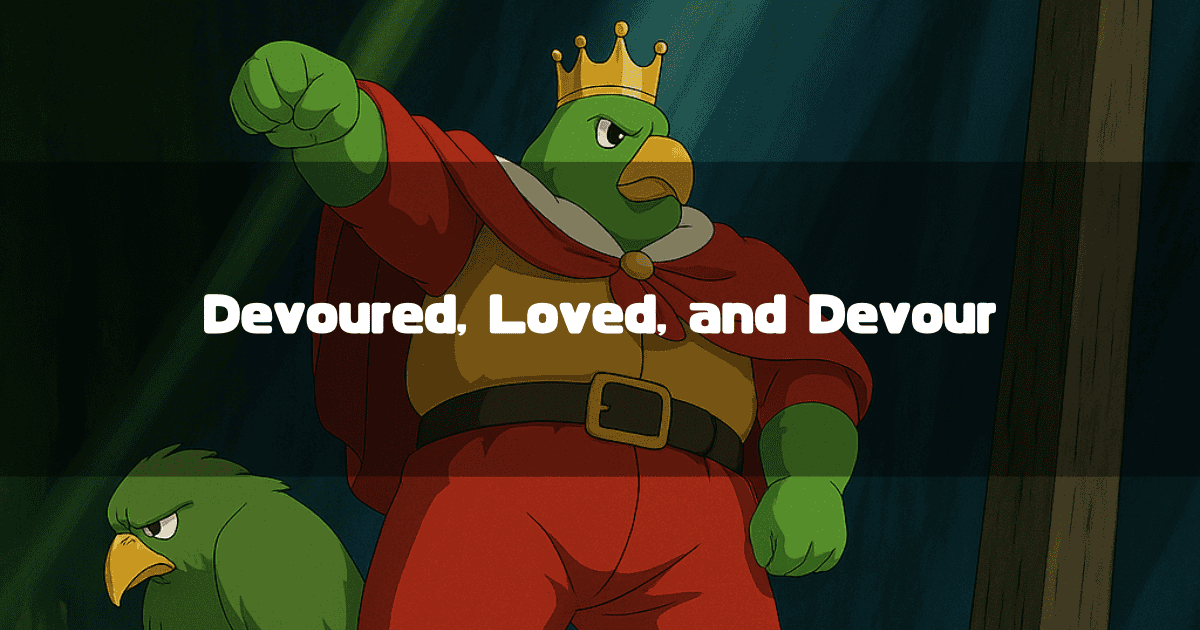
From here, I want to think about the meaning of the parakeets and pelicans depicted in the main story of The Boy and the Heron. To do so, a statement by Hayao Miyazaki featured in the documentary Never-Ending Man is considered to be of great importance, so I will start by looking back at that.
Hayao Miyazaki’s Statement in the Documentary
In the documentary Never-Ending Man: Hayao Miyazaki(終わらない人 宮崎駿, in Japanese), which aired on BS in 2017, Hayao Miyazaki said the following.
“I really think it’s over. Yeah, I raised successors. And then, when the successors were raised and I let them do it, it ends up that I eat them. I eat these people’s talents. There’s not a single person left who I want to let try. The studio eats people. Well, this is fate. So, it eats them. And then it’s over, just like that. I have no lingering regrets.”
*I have filled in parts that were difficult to hear.
(Original Text in Japanese)
「おわったんだなーってほんとに思うんだよ。いや、後継者を育てたよ。それで、後継者がそだって、やらせると、結局食べちゃうことになるんですよ。この人たちの才能食べちゃう こいつにやらせてみたいという人間は一人もいなくなった。スタジオは人を食べてくんですよ。まあ、これがだから宿命だからね~。まあ、食べて。それで、おしまいになっちゃって、ぴしゃっとさ。なんの未練もないんだよ。」
This was after the release of the movie The Wind Rises, and after the production department of Studio Ghibli was dissolved.
To begin with, Hayao Miyazaki’s filmmaking process is unique, where he casually corrects the work drawn by many excellent key animators. Animator Kitaro Kosaka speaks about this situation as follows:
“Mr. Kondo’s checks have two stages. When the key animation is done, he first corrects only the characters. So the acting is not checked, and that cut goes to the in-betweening staff, and only when the in-between animation is done does he check the acting. The key animator’s effort is not completely wasted like with Mr. Miyazaki’s checks, but this method is also very risky…”
(Original Text in Japanese)
「「おわったんだなーってほんとに思うんだよ。いや、後継者を育てたよ。それで、後継者がそだって、やらせると、結局食べちゃうことになるんですよ。この人たちの才能食べちゃう こいつにやらせてみたいという人間は一人もいなくなった。スタジオは人を食べてくんですよ。まあ、これがだから宿命だからね~。まあ、食べて。それで、おしまいになっちゃって、ぴしゃっとさ。なんの未練もないんだよ。」」From Ghibli Textbook 9: Whisper of the Heart(ジブリの教科書9 耳をすませば, in Japanese)
Conversely, this shows how talented the members who can survive in such a work environment are, but even if someone left Studio Ghibli, it was only because they “didn’t fit Hayao Miyazaki’s physiological sense,” and not a matter of their ability as an animator. I mean, if you think about it, animators are almost like “wizards,” and it’s just that there are harsh conditions even among them (a world far beyond the reach of us who can’t draw).
In any case, people who were close to the presence of Hayao Miyazaki would become either “excellent beings whose talent is devoured” or “incompetent (people he wouldn’t want to entrust a work to).” The creative field might be like that, but what a harsh environment it is.
At this point, we can at least consider what the “pelicans” represented.
The Pelicans are an Extension of Hayao Miyazaki, Who Devours Talent
If the “world below” represents the creative field of Studio Ghibli, what kind of beings are the Warawara who fly away from there to become “humans”?
I think various possibilities can be considered, but it can also be seen as representing “talents trying to leave Studio Ghibli.”
Since the pelicans tragically eat them, that scene is likely a confession of Hayao Miyazaki’s sin. Those pelicans are a projection of Hayao Miyazaki himself, who devours the talent around him.
The Meaning of the Words Engraved on the Golden Gate
Thinking this way, we can also see the meaning of the scene where Mahito is surrounded by pelicans when he comes to the “world below.”
On that gate, it is written, “Those who learn from me shall die,” and the pelicans surrounding Mahito were whispering to him, “Let’s go, let’s go, let’s go eat.”
In other words, the other side of that gate is Hayao Miyazaki’s creative field, and “Those who learn from me shall die” can be interpreted to mean, “If you work near me, your talent will be devoured.” Those pelicans were whispering to Mahito (Hayao Miyazaki), “Come on, let’s make another movie and go devour some talent.“
The Meaning of the Old Pelican’s Lines
If we think of the pelicans as “Hayao Miyazaki who devours talent,” the meaning of the old pelican’s lines, whom Mahito buries, also becomes clear. He said the following:
My kind were brought to hellscape so we would eat the warawara.
This sea has few fish we can eat. My kind were all starving.
We flew as high as we could. As high and far as our wings could carry us.
But… it was always ended the same. We could only reached this island.
Now our newborns are forgetting how to fly. We eat the Warawara. The fire maiden burns us…
This sea here… is cursed…
What do you think? Doesn’t it sound exactly like the words of Hayao Miyazaki quoted above?
In other words, the old pelican was saying, “I am aware that I devour the talent around me, and I think it’s not a good thing, but when I start making a movie, I repeat the same thing.” In the end, it can be taken as Hayao Miyazaki’s words of repentance.
The Meaning of the Parakeets, Part 1 – An Extension of Hayao Miyazaki
The pelicans appeared as those who devour the Warawara, but the parakeets also appear in the film as “devourers.” According to the Grey Heron, they “even eat elephants,” so they are beings that eat absolutely anything (and they have already eaten the blacksmith).
Let’s look back at Toshio Suzuki’s testimony on this matter as well. In an interview in SWITCH Vol.41 No.9 Special Feature: The Adventure Surrounding Ghibli, Toshio Suzuki testifies as follows:
Miya-san says, “The Parakeet King is me.” And he said, “The other self I wanted to be is Mahito.”
(Original Text in Japanese)
宮さんは「インコ大王は自分だ」と言う。そして「なりたかったもう一人の自分が眞人だ」と言っていました。
If director Miyazaki himself is projected onto the Parakeet King, then the “devouring” depiction of the numerous parakeets can also be seen as a manifestation of director Miyazaki’s devouring of talent. However, if the “King” is Hayao Miyazaki, then wouldn’t the numerous parakeets led by that “King” be the many animators who have supported Studio Ghibli?
However, no matter how you look at it, those parakeets are not depicted as positive beings. They are clearly a “disorderly mob.” This is where director Hayao Miyazaki’s words, quoted above, come into play:
There’s not a single person left who I want to let try.
(Original Text in Japanese)
こいつにやらせてみたいという人間は一人もいなくなった。
In other words, I think the reason the parakeets were depicted as a “disorderly mob” is that it reflects these feelings of director Miyazaki.
Of course, that is only how they appeared in director Hayao Miyazaki’s eyes, and at least from our perspective, all the Ghibli animators are like wizards.
However, it seems that even those wizards were unsatisfactory for the great wizard. It’s a truly strict world.
The Conflict Between the Parakeet King and the Granduncle
Now, the Parakeet King, who seems to be a projection of director Hayao Miyazaki himself, holds a deep respect for the Granduncle, the creator of that world, but also has a great sense of rebellion. And in the end, he clearly said “No” to the decision to have Mahito inherit the world. What on earth does this action mean?
It seems there are two aspects to this. Namely,
- Rebellion against director Isao Takahata’s way of being.
- Reflection on Hayao Miyazaki’s own way of being.
As mentioned above, director Miyazaki had complex feelings towards director Takahata. Among them, the rebellious spirit towards director Isao Takahata was depicted as the “conflict between the parakeets and the Granduncle” in The Boy and the Heron.
On the other hand, if we consider that Hayao Miyazaki himself is also projected onto the Granduncle, it can also be seen as a manifestation of self-criticism towards the “malice-filled stones.”
As in the words of Kitaro Kosaka quoted above, director Hayao Miyazaki’s filmmaking environment was truly a place that could be called “malice-filled stones.” From the perspective of a “creative field,” this has an aspect of being natural, and there may be few film directors who do not have the quality of “malice-filled stones.”
Nevertheless, when looking back on one’s life, it is natural to have the thought that “there might have been another way,” and that thought is likely depicted as Mahito’s decision. Mahito denies the Granduncle’s “malice-filled stones” and chooses to “make friends.” It’s a bit difficult to understand “friends” as a contrast to “malice-filled stones,” but it’s easier to understand based on the following statement by Toshio Suzuki included in Ghibli Textbook 2: Castle in the Sky(ジブリの教科書 2 天空の城ラピュタ, in Japanese):
When Nausicaä of the Valley of the Wind was completed, Hayao Miyazaki declared, “I will never direct again. I don’t want to lose friends anymore.” To complete a single work, you sometimes have to say harsh things to the people you sit at a desk with. If an animator’s acting is going in a different direction from your intention, you have to give the instruction, “That’s wrong.” With every one of those words, everyone moves away. Miya-san says he can’t bear this loneliness.
(Original Text in Japanese)
『風の谷のナウシカ』が完成した時、宮崎駿は「もう二度と監督はやらない。友達を失うのはもう嫌だ」と宣言しました。一本の作品を完成させるためには、机を並べていた人に対して厳しいことを言わなければならないこともある。アニメーターの描いた芝居が自分の意図と違う方向に向かっていると「違う」と指示を出さなきゃならない。その一言ごとに、みんなが離れていく。宮さんは、この孤独に耐えられないという言うんですよね。
In other words, Hayao Miyazaki’s quality of “malice-filled stones” caused him to experience “losing friends.” Nevertheless, he couldn’t change that part of himself, nor could he stop making movies. The Granduncle was also a manifestation of that Hayao Miyazaki. That’s why the concept opposing “malice-filled stones” was “friends.”
It is certainly clear that Mahito is depicted as “the other self I wanted to be.“
The Meaning of the Parakeets and Pelicans Being Brought by the Granduncle – The Harshness Learned from Isao Takahata
The parakeets and pelicans were brought to the “world below” by the Granduncle, but the pelican described this as being “brought here.”
Of course, this can be taken as an emphasis on “repentance.” In other words, the devouring of talent is his own problem.
On the other hand, considering that the model for the Granduncle is Isao Takahata, it can also be seen as a statement of opinion that “the nature of devouring talent is something I learned from Isao Takahata, so it can’t be helped!“
It may mean that he “learned the severity of creating a work,” but from another perspective, it could also be seen as a prideful declaration: “I was devoured, but I sprouted without being completely devoured!“
Thinking this way, the meaning of Hayao Miyazaki’s words, “There’s not a single person left who I want to let try,” is understood not as there being no talented people, but as “there are no people who will fly away on their own.”
However, personally, I also think that he just didn’t realize it. It seems that that was what “malice-filled stones” meant.
The Meaning of the Parakeets, Part 2 – “Us” Who Only Consume
In the analysis so far, I feel I have been taking a somewhat meta-perspective. I think that helps to understand the pelicans better, but for the parakeets, I think there was a more direct impression. In other words, the parakeets that devour everything are more naturally seen as representing us as consumers.
Because that’s how they looked, right? I thought so myself when I first saw it in the theater. That they are us, who just devour the works.
And the figure of the Parakeet King, who casually says “No!” to the Granduncle who created the “world below,” is appropriately seen as people like me who have a story painstakingly spun for them and are freeloading on it by doing so-called “analysis.”
This can also be understood from the fact that Toshio Suzuki is projected onto the Grey Heron.
The Meaning of the Grey Heron Saving Mahito from the Parakeets – What the Devoured Blacksmith Symbolizes
As mentioned in the production documentary Hayao Miyazaki and the Grey Heron and…(宮崎駿と青サギと, in Japanese), the model for the Grey Heron (Heron Man) is producer Toshio Suzuki.
In the film, the Grey Heron suspiciously invites Mahito to the Granduncle’s tower, which can be said to be “the figure of Toshio Suzuki trying to get Hayao Miyazaki to create a work.”
And on the other hand, towards the end of the story, the Grey Heron is in a state of fighting alongside Mahito, and the Grey Heron is desperately saving Mahito, who is about to be eaten by the parakeets. I feel a slight contradiction with the suspicious invitation, but that is to say, I think it represents that Toshio Suzuki has always stood at the forefront of the “business” side of Studio Ghibli and has continued to protect Hayao Miyazaki as a “creator.”
If you think about it that way, you can also understand what the blacksmith who was eaten when the parakeets first appeared symbolizes.
The blacksmith who was eaten by the parakeets symbolizes the creators who have been crushed by the money-grubbers who flock to creators and by one-sided consumers like us. The Grey Heron (Toshio Suzuki) is desperately protecting Mahito (Hayao Miyazaki) so that that doesn’t happen, and director Miyazaki is saying “thank you” to Toshio Suzuki for his actions.
The scene where the Grey Heron, fleeing with Mahito, gets covered in “muddy water” is deliberately depicted, and that also seems to carry the meaning of “Thank you for taking the fall for me,” and “Thank you for making me—at least on the surface—a ‘pure thing.’“
The fact that Mahito declared the Grey Heron his “friend” is heartwarming.
But on the other hand, as mentioned earlier, consumers who freeload like me are clearly being targeted with critical feelings.
People like me are not “malice-filled stones,” but “foolish stones.” We can’t even get cut by the Parakeet King (Hayao Miyazaki).
“Be a producer!“
This, in the end, was probably the biggest message we were meant to receive. Miyazaki’s works have always been that way, though.
The above is what I personally thought about “the meaning behind the depiction of the parakeets and pelicans.” I think I’m on the right track, and I could feel my thoughts organizing themselves as I wrote this article.
I can’t help but feel the criticism towards one-sided consumers… but I have no choice but to say “I’m sorry” to director Miyazaki in my heart and continue. Because I just can’t help wanting to do it.
About the Author
Recent Posts
- 2025-10-21
Indiana Jones and the Dial of Destiny(2023): Full Synopsis & Analysis: Indy’s True Motive and the Enigma of Helena - 2025-10-15
Indiana Jones and the Dial of Destiny(2023):Historical Background-WWII, the Real Dr. Schmidt, the Siege of Syracuse, and the Antikythera Mechanism - 2025-10-08
Why Does Children Who Chase Lost Voices Feel So Ghibli-esque? [Makoto Shinkai’s “Tale of Farewell”] - 2025-10-07
5 Centimeters per Second: Characters, Voice Actors, Character Analysis and Character Map - 2025-10-06
5 Centimeters per Second: Full Synopsis, Analysis, Ending Explained & Character Map (Spoilers)

